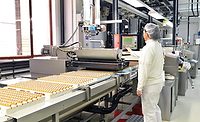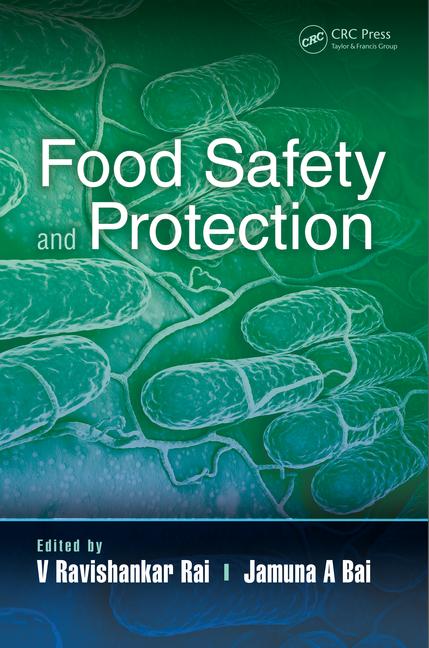The evolution of food protection
Food safety strategies over the past 40 years

It’s difficult to imagine the substantial amount of change that has occurred on the food protection front over the last four or five decades. What consumers find satisfactory as a safe and nutritious meal today is very different than what their demands and concerns were just a few years ago. In the 1970s, people were blissfully unaware of most food-borne illnesses; today, they’re much more aware of food-borne illnesses, but now express zero tolerance for pathogen contaminated foods.
Fifty years ago, refrigerated food items were routinely made locally or, at best, regionally, had a relatively short shelf life, and any possible food-borne illnesses from “contaminated” foods were not routinely advertised or announced on the evening national news. Then the main methods of preserving and protecting food were either drying, retorting, or pickling.
Nevertheless, in the late 1970s and early 1980s, there were a few individuals and some small businesses that worked with food companies to help them to at least minimize spoilage using other newer means. One of those companies was a small Northwest startup called Wesman Foods. They decided there must be a better way to attack the relatively short shelf life of refrigerated foods by taking advantage of the benefits of select fermentation. Their focus was to stay within the dairy industry, where they had experience, and somehow try to contribute to minimizing dairy product spoilage. They decided to develop a fermented milk product that would allow dairies to take advantage of the benefits of fermentation food preservation, even though the finished food products themselves may not be fermented.
Their resultant antimicrobial fermentate technologies found success in dairy products, and soon found their way to non-dairy items, such as dressing and sauces. The main reason for their use was to protect against food spoilage and enable long-term shelf life stability. Overall, most of the work on food “preservation” was mainly focused on general shelf life extension. It seemed like everyone wanted to reduce spoilage and increase market areas. Profits could be easily calculated. Pathogen control was of minor concern as it was rarely raised in technical conversations.
The impact of Listeria
This all changed in 1985 with the significant and initial outbreak of Listeria monocytogenes from a Mexican cheese operation in Southern California. Of the approximately 150 illnesses and 62 deaths attributed to the outbreak, many were stillbirths. From that time forward, Listeria became a household term feared by virtually all consumers and manufacturers alike. Food producers now had another pathogen with which to contend: Clostridium botulinum, Salmonella, E. coli, Staph, Campylobacter and the new dreaded killer Listeria.
For those of us in the early and expanding antimicrobial business, the “pathogen” situation seemed quite simple. When asked if there was any ingredient to help control Listeria or pathogenic E. coli in various food items, the answer was always “No.” For philosophical, legal and regulatory reasons, the standard position taken was that if a manufacturer suspected a pathogen presence in their product, then they needed to upgrade their facilities and manufacturing protocols and improve their sanitation. When it came to pathogens, having just one was too many. Consequently, the focus was strictly on shelf life extension (maintaining packaged freshness), not pathogen control. Pathogen control was the responsibility of those businesses more suited to help—sanitation chemical suppliers, equipment and plant designers, industrial microbiologists, and the like.
But during the late 1980s, other things were happening. The Federal government became heavily involved, putting constraints and testing protocols on numerous food processors, forcing them to test for and take responsibility for the products they make and sell to the general public. At the same time, manufacturers needed guidance on what to do and how to do it.
The birth of microbial protocols
It was then, during the late 1980s and early 1990s that the industry turned to an older, intensive process called HACCP (Hazard Analysis and Critical Control Points). This program was originally developed in the 1970s by Pillsbury and the U.S. Army Labs as guidelines to assure safe foods for upcoming space explorations. From that process sprang numerous microbial protocols, testing validations, requirements, certifications, teaching tools and companies and individuals to teach the implementation of HACCP to minimize the presence of specific pathogens in the food chain.
For us in the antimicrobial business, the timing was perfect. The antimicrobial producers could help extend shelf life, while HACCP, if instituted correctly, would help with pathogen control. In addition, with good HACCP protocols in place, manufacturers found they could also reduce their initial spoilage contaminants, which helped the effectiveness of added antimicrobials by having fewer organisms to control in the first place.
Pathogen control
Over time, companies developing, making and selling antimicrobials for shelf life control were pulled into the pathogen control business. It began in earnest in 1988 when the FDA approved the use of nisin preparation, a bacterial byproduct bacteriocin, to control the pathogen outgrowth of Clostridium botulinum in process cheese. Clients and customers soon realized that nisin preparation also could control the outgrowth and even kill certain pathogens in food products, including Listeria.
The FDA established a zero tolerance of Listeria in food products (the strictest in the world), which created a welcome food industry seeking any additional effective antimicrobial hurdles to help control the presence and outgrowth of pathogens, particularly Listeria.
In the 1990s and 2000s, pathogen control seemed to overtake shelf life stability challenges at food manufacturers. As several companies learned, a single outbreak or recall over a pathogen issue could easily bankrupt smaller organizations and cause significant public relations concerns for larger ones. At the same time, the FDA and particularly the USDA tried to incentivize manufacturers to establish stricter controls over pathogens.
The USDA, for instance, established rules that succeeded in bringing numerous food industry entities together, including food manufacturers, equipment suppliers, antimicrobial producers and government regulators. They initiated guidelines and standards that if proven antimicrobial hurdles were in place, they (the USDA) would reduce the number of times the manufacturer would be audited. But the exact opposite occurred. The results of these new guidelines actually resulted in more regulatory oversite in many plants. The premise given was that the USDA was assuring that the companies were effectively implementing the antimicrobial hurdles.
Continual change
The last 10 to 15 years has seen numerous and constant changes. One of the more significant advancements has been in pathogen detection now taking mere hours rather than days to complete. With a high degree of confidence, manufacturers can now be sure their product is pathogen free. Sometimes when things do slip through the cracks and a pathogen-contaminated product does get to market, consumers seem to have confidence the problem will be quickly resolved and will not affect them personally. As a result, they are not as apprehensive as they used to be, and trust that news networks will inform them if there is a problem. More importantly, food manufacturers are being more vigilant in their plant designs, raw material standards, production and processing protocols and even food safety personnel. And, by default, antimicrobial manufacturers are now focusing on shelf life and pathogen control in foods.
So, we’ve now come to a time when we all carry a computer in our pockets, instantly connect to anyone around the world (rather than using three-part NCR paper or FAX to write call reports), have witnessed sequencing the human genome, and have almost instantaneous identification of microbial spoilage and pathogenic microorganisms. As food microbiology has progressed over the decades, so have consumer demands for their food supply, but in one sense in the opposite direction. Currently consumers are clamoring for non-GMO, minimally processed, clear and clean labeled foods, made with fewer and fewer ingredients that are all easily understandable. And they need to be pathogen free while maintaining their packaged freshness forever. This is definitely creating new and exciting challenges and opportunities. We at DuPont are striving to attain all the goals.
Looking for a reprint of this article?
From high-res PDFs to custom plaques, order your copy today!







